Papua New Guinea
Safeguarding Papua New Guinea’s Biodiversity
Under the black velvet cover of night, Samuel switches on his headlamp and fumbles in the dark to dress. His colleagues are still snoring soundly in their tents. Rubbing the sleep from his eyes, he trudges up the dirt path where a pickup truck awaits him. The car’s headlights cut through the thick morning mist as they drive down a bumpy road cradling the forest’s edge.
When they’ve reached their destination – a clearing across from a majestic ridge- Samuel steps out, binoculars in hand. “I’m here to count the birds,” he says. “I record birdcalls for 15 minutes on this device, which can pick up sounds in a 50-meter radius, and then write down as many species as I can identify.” Yesterday, he recorded 98 unique birdcalls, ranging from the Sulphur-Crested Cockatoo to the famous Bird of Paradise.
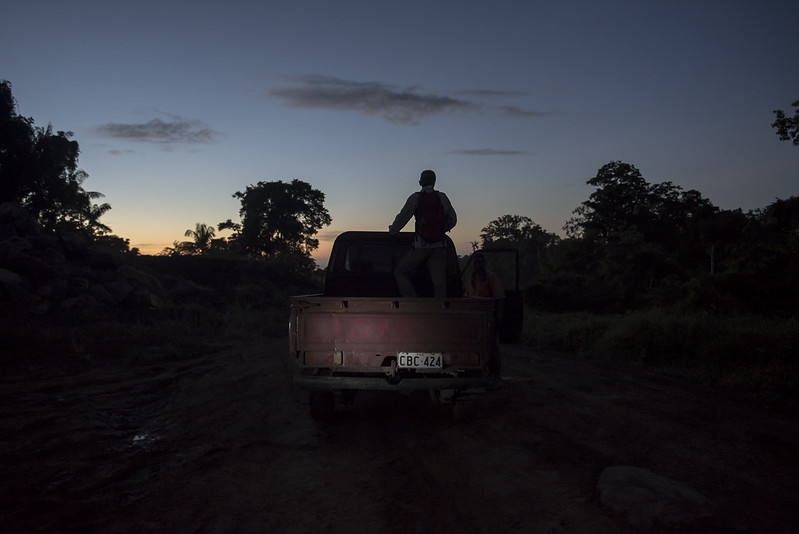
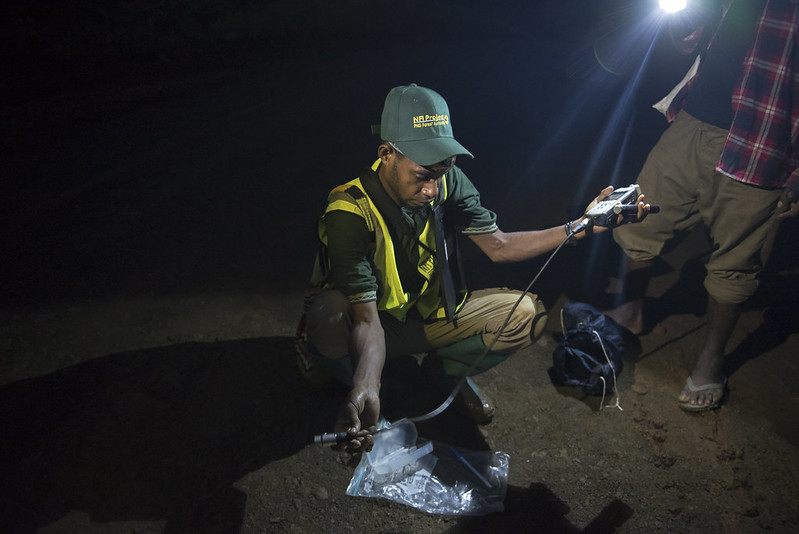
Knowledge is Power
The Island of New Guinea contains the world’s third largest rainforest after the Amazon and Congo Basin. Papua New Guinea (PNG) comprises the island’s eastern portion and West Papua, which is part of Indonesia, comprises its western portion. PNG is incredibly resource-rich with five percent of the world’s biodiversity in one percent of its surface area. Its forests are ecological goldmines housing more than 20,000 species of vascular plants, 191 species of mammal (of which 80 percent are endemic), 750 bird species (of which 50 percent are endemic), 300 species of reptile and 198 species of amphibian. Yet despite the treasures they store, PNG forests are poorly known scientifically.
To address this challenge, the UN-REDD Programme together with the European Union, has been supporting the country’s first-ever Multi-Purpose National Forestry Inventory (NFI) since 2014. Funding for the NFI project, which will conclude at the end of 2019, has enabled local scientists to gather important data on PNG’s flora, fauna and carbon stock, in order to accurately estimate greenhouse gas emissions from deforestation and forest degradation.
“There is no clear definition of a NFI. Each country is allowed to design its own NFI as it sees fit,” “What makes the NFI in PNG unique is that we have a comprehensive biodiversity component in addition to the usual tree enumeration and measurement.”
Dr. Abe Hitofumi
FAO’s Chief Technical Advisor for the NFI Project in PNG
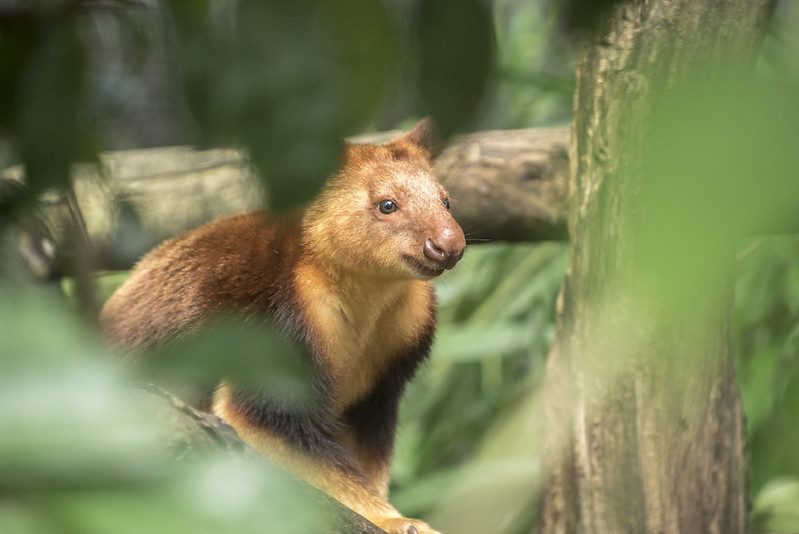
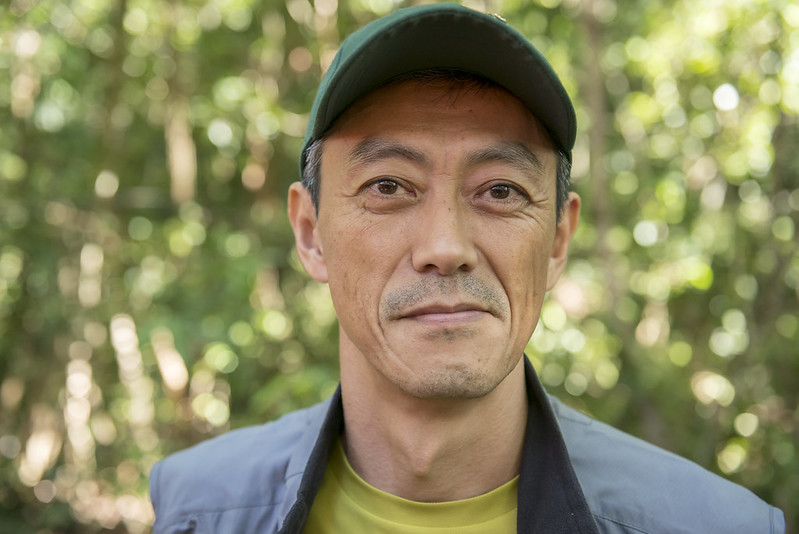
An Ecological Network of Interactions
“For the botanical component, it’s not only focused on trees. We look at what is living on the trees- what kind of insects they support, what kind of birds are feeding on the insects… we look at the whole ecological network of interactions,” says Vojtech Novotny, Director of the New Guinea Binatang Research Center, which leads on the NFI’s zoological component.
“We decided to study insects, which is the largest group of animals in the forest. From there, we selected ants, which are predators. Fruit flies are another group we study. They feed on fruits, which captures an aspect of the plant-insect interaction. Another group are geometridae moths whose larvae feed on leaves. So we have both insect herbivores and insect predators. Finally we have birds, which represent vertebrates, and feed on both insects and fruits.”
The selection of these three insect groups (ants, fruit flies, geometrid moths) and birds for the NFI was influenced by several factors including their significant roles in the forest ecosystem; their availability for rapid sampling; and because they are well, or at least moderately-known taxonomically.
Working Around the Clock
Samuel was among the researchers who worked around the clock in the Central Province of Papua New Guinea throughout 2019 to gather field data for the NFI. His camp was divided into three teams – plants, zoology, and soils.
There really is a 24-hour cycle in the life of animals,” says Novotny. “Given this, we also need to be active the entire time. The ornithologists are the first ones to wake up, because they have to take advantage of the early morning when birds are most active.” So when Samuel gets off his shift at 7 a.m. and returns to base camp, his comrades are just getting ready for their shift – sipping on instant coffee and munching on navy biscuits for breakfast.
They pull on their gumboots, greet Samuel, and hop into the truck for their turn out in the field. Pulling back dangling tree vines to descend into the depths of the forest, the foresters get out their monitoring equipment, and team up with the botanists for a hard day’s work.
“In my team, we measure trees in circular plots ranging from three, 10, 15, and 25-metre radii. We take diameters and heights and record everything electronically on tablets,” “We want to know the composition of the tree species, as well as its carbon stock.”
Forester Elizabeth Kaidong
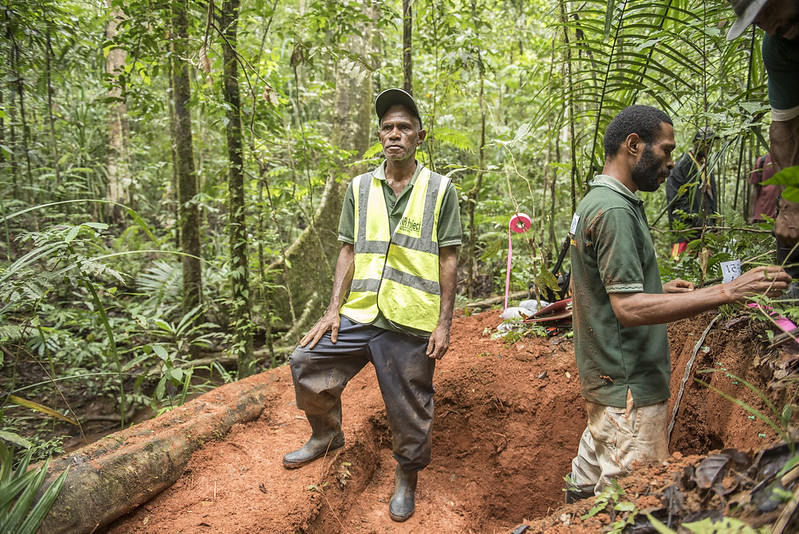
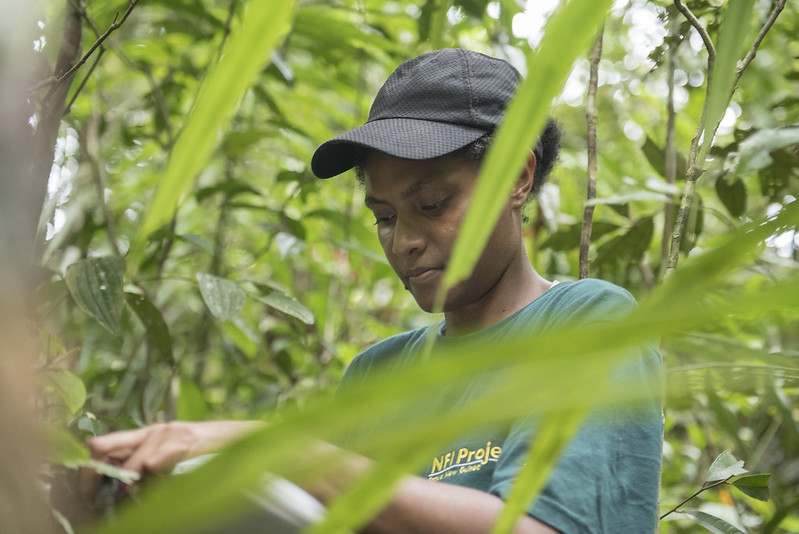
“My job as a botanist is to look at the plants and give the plants scientific names,” says Kipiro Damas, Senior Botanist at the NFI Camp.
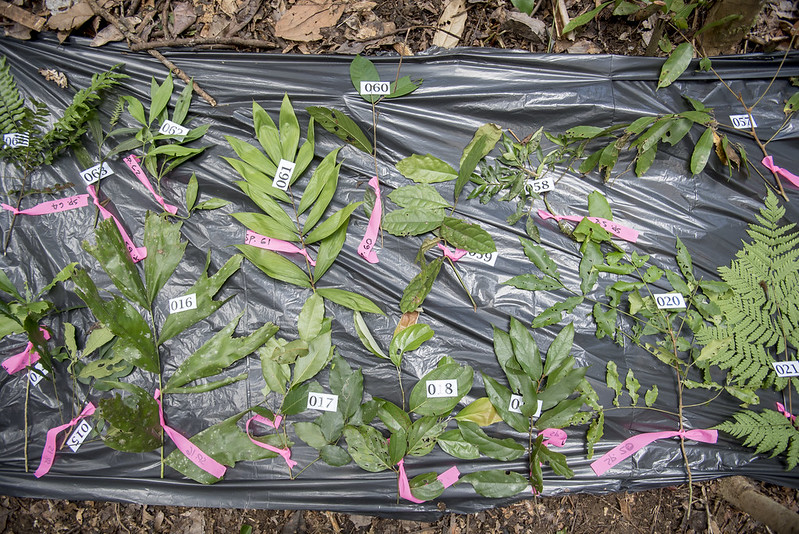
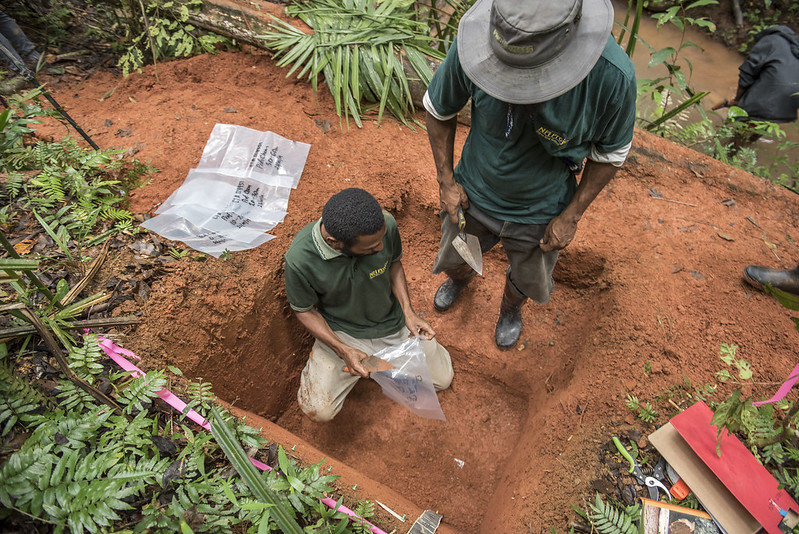
Most specimens (leaves, flowers, fruits) are collected for identification and storage at PNG’s National Herbarium in Lae, but some specimens are even sent abroad for cross-referencing.
There is also a dedicated soil team because soil helps regulate important ecosystem processes, such decomposition and water availability. Studies show that soil could store between 50-75 percent of forest carbon in PNG. The NFI team collects soil samples to better understand its carbon and nutrient composition in relation to different forest types and human disturbances
Promoting Capacity-Building
Capacity-building within the PNG Forest Authority (PNGFA) is crucial for the successful implementation of the NFI. Given this, a number of trainings have been facilitated by the UN-REDD Programme and FAO on remote-sensing and data management analysis.
In addition, 13 scholarships were awarded to post-graduate students at the University of Technology in Lae to research and analyze NFI data. Redley Opasa, who graduated in April this year, is one of them.
“I’m blessed to be a part of this project,” he says. “The thing I enjoy the most about being part of the NFI survey is the chance to go around my country and discover our undisturbed forests. I have learned to really appreciate PNG’s rich biodiversity.”
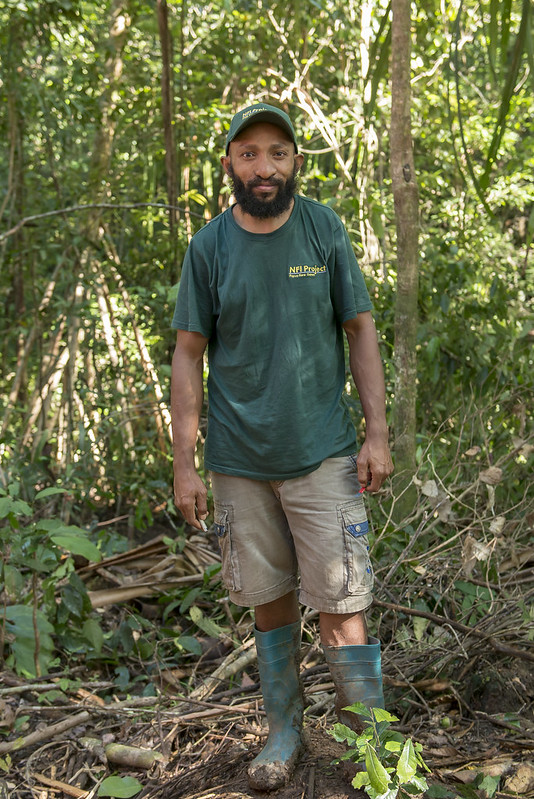
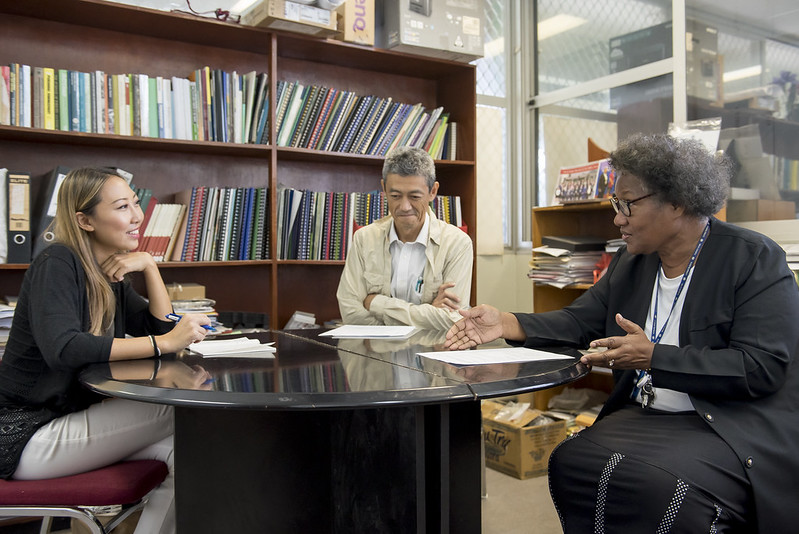
The Prime Minister of PNG, Peter O’Neill, and the Minister for Forests, Hon. Douglas Tomuriesa (both at that time), launched the NFI project in 2016. The project’s outcome will be invaluable to PNG in terms of providing the country with relevant information on the valuable assets in their forests.
“For us, the NFI project is very important,” says Dr. Ruth Turia, Director for Forest Policy & Planning at PNGFA and Project Director for the NFI. “When I started work here in 1981, we didn’t have anything close to what we have now. The information we had then regarding our forest resources was what the Australian foresters in PNG had come up with based on photographs taken during the war period. We knew where the forested areas were, but we didn’t know much else about the actual quantity and type of forests that were out there.”
“I always had the passion to ensure we had a NFI,” “We had various forest inventories for concessions, but we never had one covering the whole country. In 1990, we put in a submission to our government, but the budget was about $10 million USD and our government said it didn’t have the money. I am very grateful to the UN-REDD Programme and the EU for their support.”
Goodwill Amos
Acting Managing Director of the PNGFA

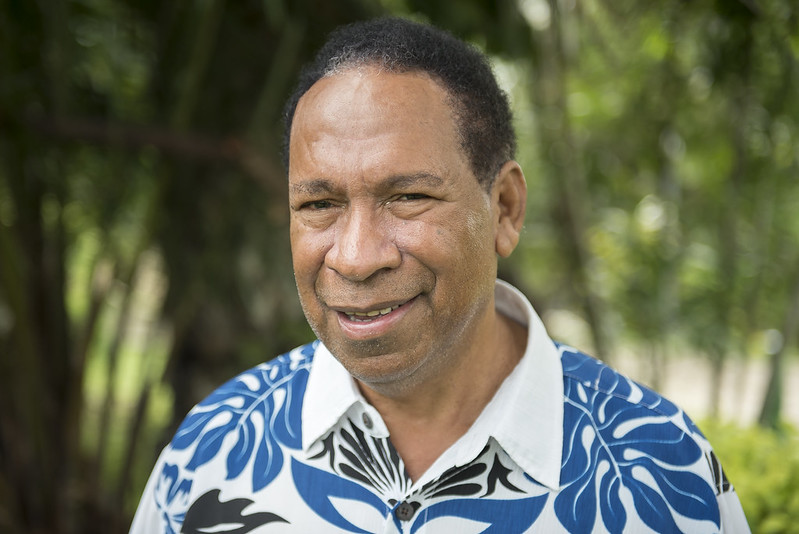
“We chose to fund the NFI project to support PNGFA in the fight against climate change,” says Sandrine Giansily, Program Manager for Rural Development/WASH/ Climate Change for the EU Delegation in PNG. “By supporting this NFI project, the PNGFA has extended its expertise in forest monitoring and is now able to share this knowledge with neighboring countries across the Pacific region.”
Putting Communities First
Unlike some countries, the forests here belong to the people, not the state. The support of local communities is therefore crucial for environmental and biodiversity conservation. “In PNG, 97 percent of the land is owned by the people, so the forests are historically maintained by the landowners as custodians of natural assets. It is important to engage and incentivize them to sustainably manage their forest resources,” says Mirzohaydar Isoev, REDD+ Chief Technical Advisor for UNDP in PNG. The NFI project has been contributing to PNG’s national green economic growth by promoting education and employment opportunities, from providing hands-on trainings for foresters to engaging local communities in the NFI project.
With 78 percent tree cover, PNG’s forests are relatively well-conserved. However, they are being confronted with increasing pressure due to resource extraction, especially through logging, but also from clearing for agriculture. The hope is that this NFI project will serve as a stark and timely reminder that the forests are among the country’s greatest treasures.
“Our country’s national policy, Vision 2050, calls for carbon neutrality by 2050. With that in mind, we also want to develop as a country,” “REDD+ provides that pathway for us. It is a mechanism where we can achieve transformational change within the country, achieve our development aspirations, but in a sustainable way.”
Terence Barambi
Manager of the REDD+ Branch Climate Change and Development Authority (CCDA) in PNG
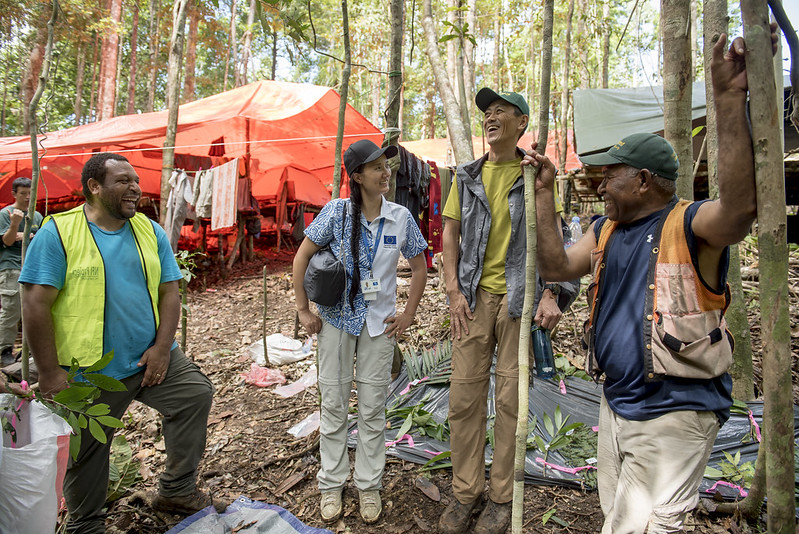

Story by: Leona Liu, Asia-Pacific Regional Communications & Knowledge Management Specialist for the UN-REDD Programme
Photographs and videos by: Cory Wright/UN-REDD Programme

